The Manchester and Salford Junction Canal is Manchester's almost forgotten waterway. It was built in 1839 to link the River Irwell and the Manchester, Bolton and Bury Canal to the Rochdale Canal.
The canal was less than a mile long, with 4 locks and a tunnel below the Deansgate area. It was built to let boats get between the Irwell and the Rochdale Canal without having to pass through the Bridgewater Canal's Hulme link, the tolls for which were high.
The canal was never a great success as it never carried as much traffic as anticipated, partly because the Bridgewater company retaliated by reducing their own tolls. Loading wharves were constructed in the tunnel section with goods being hoisted through shafts to and from the railway warehouse later built above.
A unique feature of the canal was that the two top locks were constructed as parallel staircase locks (i.e. with a total of 4 broad lock chambers). This suggests an anticipation of a high level of traffic that never materialised. The site of these staircase locks lies under what was Manchester Central railway station. There was a stop lock between the staircases and the Rochdale Canal, with water being back-pumped up from the River Irwell to prevent water loss from the Rochdale Canal. Lock 2, to the east of Water Street was also a parallel pair of lock chambers, while Lock 1, locking down into the River Irwell, was a single broad lock.
The canal was closed in 1922 and part of it has been filled in but in the second World War the tunnel was used as an air-raid shelter.
The lock at the River Irwell end was restored when a hotel was built nearby and the Rochdale Canal end has been re-instated to provide a water feature alongside the new Bridgewater Hall.
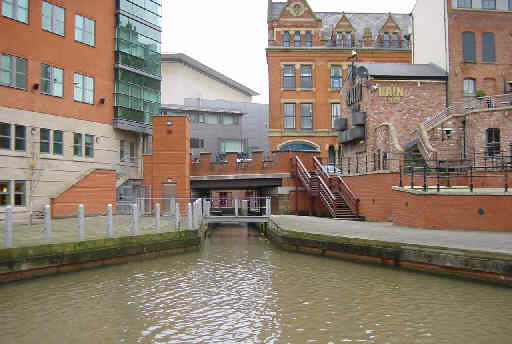
The entrance to the former Junction Canal from the Rochdale Canal.
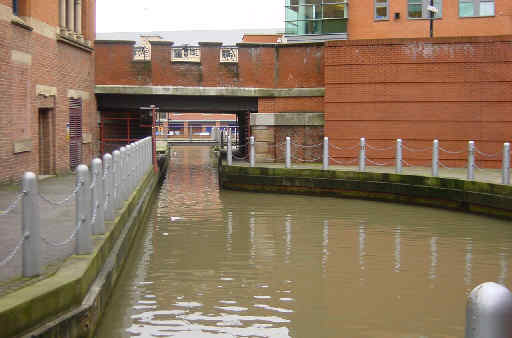
Looking south to the Rochdale Canal.

Along the side of the Bridgewater Hall.
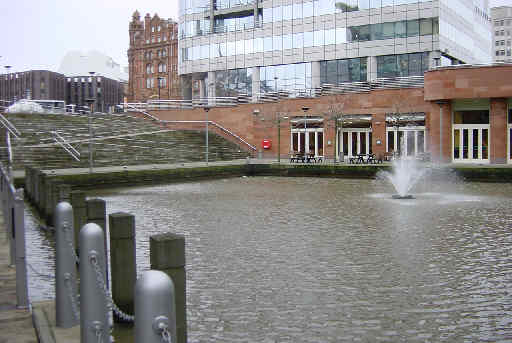
The re-instated section of the Junction Canal terminates with this basin alongside the Bridgewater Hall. This was the site of a right-angled junction leading to a stop lock below Lower Mosley Street. The water level beyond the stop lock was several inches higher, in order to prevent water loss from the Rochdale Canal. Water was pumped up from the River Irwell to keep the section between the stop lock and the the staircase Locks 3 and 4 topped up.
Below the staircase locks the canal ran in a tunnel through to Lock 2 just to the east of Water Street.
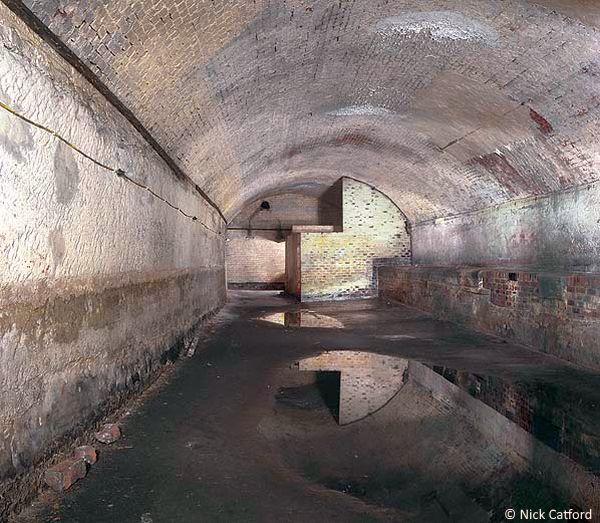
Photo: Nick Catford
Section of underground canal, with the towpath on a platform to the right
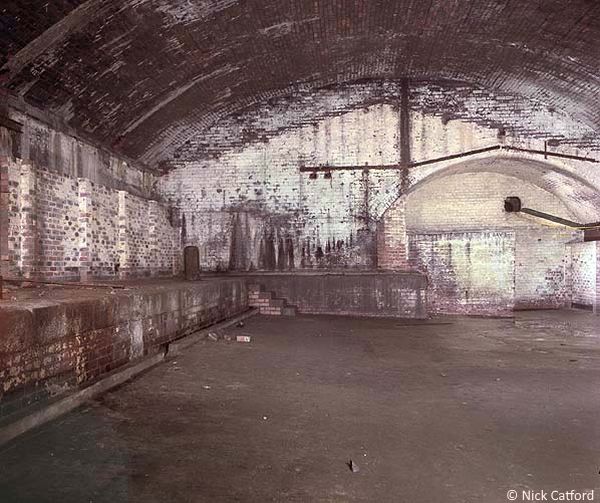
Photo: Nick Catford
Underground transhipment area below Great Northern Warehouse. The canal widens out to create a docking area for goods to be transferred to or from boats.
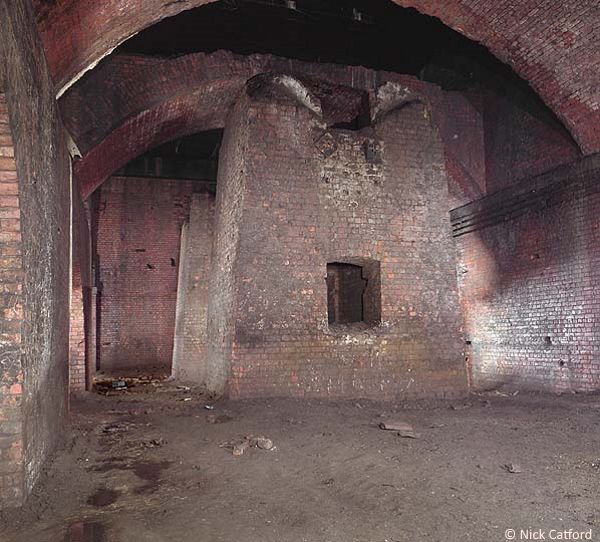
Photo: Nick Catford
Believed to be the housing of one of the two pumping engines which back-pumped water up the locks.
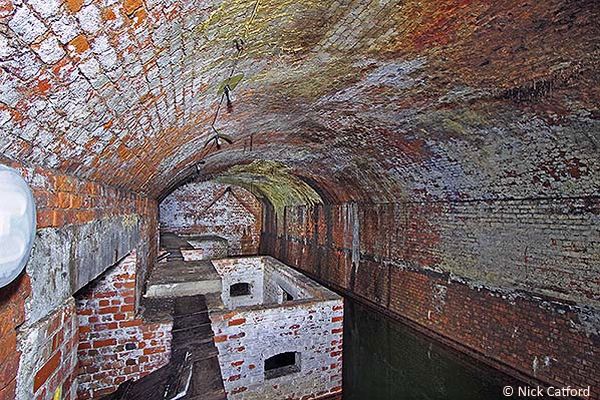
Photo: Nick Catford
Structures built on the canal bed during its use as an air raid shelter.
Below the Great Northern Warehouse. there was a transhipment area with four large bays. Two lift shafts carried goods from the canal level to the railway and warehouse levels.
The tunnels were used as air raid shelters during the second world war.
It is believed that there were two pumping engines which raised water back up the locks at the north eastern end of the tunnel. The pump housings were believed to have formerly been out in the open, but decapitated when Central Station was constructed across the line of the canal in 1875. The housings are now enclosed in part of the tunnel.
The 4 images above were taken during 1994 by Nick Catford. Larger versions along with more photographs of the underground section of this canal can be found on the Subterranea Britannica website.
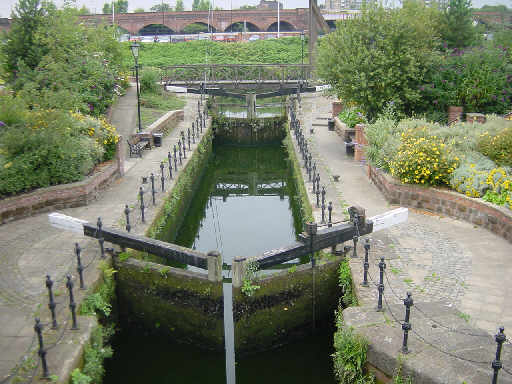
The remains of the lock at junction with River Irwell, looking north-west.
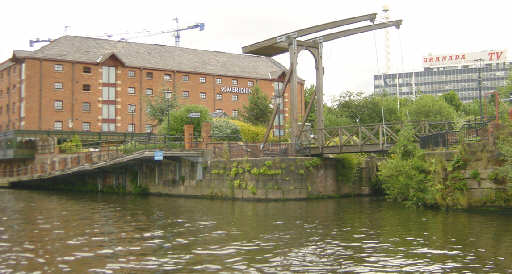
The entrance to the Manchester and Salford Junction Canal from the River Irwell. Beyond the entrance lock, the route of the canal ran under what is now Granada Studios.